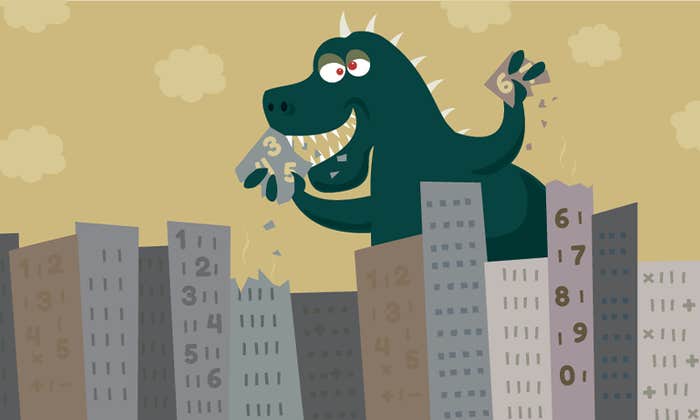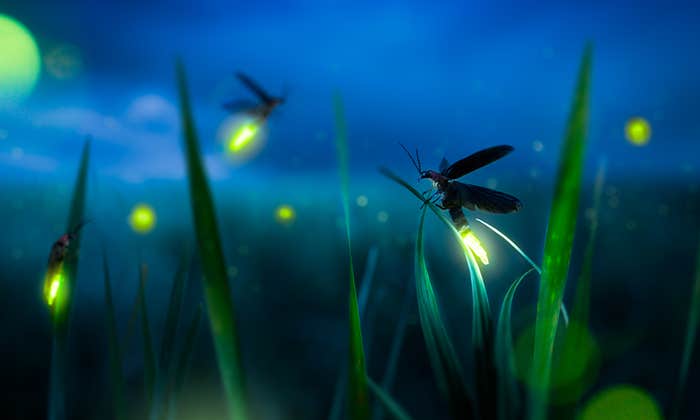Colonel John Boyd was a legendary fighter pilot with the United States Air Force. As an instructor at the prestigious Fighter Weapons School, he became known as “40-second Boyd” because of a standing bet he offered that, starting from a disadvantage, he could maneuver to get on any opponent’s tail within 40 seconds, a bet he never lost. During the Korean War, he commanded a fighter squadron of F-86 Sabres that dominated the skies over Korea and achieved a kill ratio over 10:1 against the superior MiG-15s flown by the enemy.
Even Boyd was surprised at their success. After the war, he spent years going over the data and ultimately decided it was situational awareness, specifically the greater visibility offered by the canopy on the F-86 Sabrejet vs. that of the MiG fighter, that had made his pilots so deadly. Generalizing from this one observation led him to develop a model for the decision-making process used by pilots in combat situations. Called the OODA loop, it consists of four parts: Observation, Orientation, Decision, and Action, at which point the process repeats with new observations based on the results of the previous action. In practice, fighter pilots observe the presence of an enemy plane, orient themselves to locate the adversary, decide whether to go on the offensive or try to evade the threat, and then act on that decision. Boyd’s main strategic argument was that a faster, more maneuverable plane flown by pilots with quick reactions can overcome more powerful adversaries by “getting inside” their loop, changing the facts of the engagement so quickly the opponent can’t keep up. Boyd’s theories were integral to the development of the highly successful F-16 and F/A-18 aircraft, and the OODA loop model has since spread to other strategic realms like sports, politics, litigation, business, and crisis management.

COVID-19 is now squarely inside our collective OODA loop. Three weeks ago, we were reminding ourselves to wash our hands after going out in public. Two weeks ago, we were carrying around hand-sanitizer and wiping down the tray tables on our domestic flights with disinfectant. A week ago, we were debating whether to work from home. Last weekend we were asking our restaurant servers for disposable cutlery and wondering if we should cancel party plans. Today we’re taking inventory and placing large online orders at the supermarket in case it suddenly closes or we’re confined to our houses. With each day, not only does the severity of the COVID-19 outbreak worsen, but also what it means for our daily lives seems to radically shift, claiming new parts of our routine we didn’t even know were vulnerable. Meanwhile, the virus keeps spreading.
In other countries, the spread of coronavirus may be approaching its peak, but in the U.S. we are still firmly in the exponential growth period. The problem with exponential growth is that it means most of the change is always in the recent past. Since March 1, the number of confirmed cases in the U.S. has increased by about 30 percent each day, a rate that, if held constant, would imply that roughly 84 percent of all cases will always have arisen in the last week, regardless of how big the epidemic gets. Consider what this means. Nearly everything that has happened in the COVID-19 crisis has happened in the last week. But everything is happening faster every day—so guess what? A week from now, the same will be true: Nearly everything that has happened will have happened in the last week. Everything will accelerate, and we’ll struggle to adapt. If we continue reacting too late, as we have, it will only slow down when the virus starts to run out of new people to infect.
Thus far, federal, state, and local governments in the U.S. have crowdsourced much of the decision-making to the people by relying on our discretion. But by the time we’ve processed the available information, weighed the pros and cons, and made up our minds about what interventions we deem both prudent and acceptable, the rapid spread of the virus has changed the underlying reality and rendered our decisions irrelevant at best and, at worst, catastrophic. It’s like a game of chess where our opponent’s pieces keep randomly changing into queens and warping around the board. Thinking several moves ahead doesn’t work when the rules themselves are subject to change.
Of course, the virus doesn’t know any of that. It just does what it can to co-opt any cells it can find to reproduce itself. The dynamics of its spreading are, in some senses, predictable. But uncertainty about the rates of transmission, incubation period, recovery time, and number of people exposed, exacerbated by the failure of the federal government to adequately ramp up testing capability and distribute reliable information, has put us in a position of playing constant catch-up.
Thinking several moves ahead doesn’t work when the rules themselves are subject to change.
Making quick decisions is essential to shortening our OODA loop, which we must do to get ahead of the virus. For example, South Korea, with its drive-through testing clinics, dedicated facilities to isolate sick people with moderate symptoms, and stiff fines for violating quarantine, has shown what’s possible when the cycle between observation and action is minimized. On Tuesday they reported only 74 new cases, down from a peak of 909 at the end of February, helped in no small part by testing over 5,200 people per million inhabitants, or about 70 times more per capita than in the U.S. The decisions we make must also be supported by credible information from experts, otherwise we risk going from looping to full-on panicking. But as Nassim Taleb has argued, individual actions that feel exaggerated now may seem like prudent caution when the risks are considered at a society-wide level.
Two valuable lessons from OODA-loop theory may help guide us. One is the documented fact that the more options people have open to them, the longer they take to make decisions. In 1952 psychologist William Edmund Hick showed that, when faced with two options in response to a stimulus, subjects reacted about 58 percent slower than those with only one choice of what to do, an example of what became known as “Hick’s Law.” So if we, both as individuals and collectively, can narrow down our choices as much as possible ahead of time, we may be primed to act fast, like tapping the brakes in stop-and-go traffic when we see the car ahead slow down. Keep your foot hovering over the brake pedal, and you’ll be ready to stop quickly. The current brake pedal might be sheltering in place or closing the roads. If we think through now what steps we might take next, it will become a question of “When?” instead of “Now what?”
A second lesson from Boyd’s model, though, is the important role that preconceptions and emotional reactions like denial can play in lengthening our OODA loops. If we refuse to accept the changing landscape of the pandemic because it runs counter to a self-interested assertion that we’ve pretty much shut it down and that, like a miracle, it’s going to disappear, then we delay our ability to act decisively when the facts smack us in the head. So, by the time we’ve caught up to those facts, all new horrors are waiting to smack us again. Instead, we need, paradoxically, to admit our uncertainty so that any new evidence we receive won’t get lost in a fog of outdated assumptions. In Bayesian inference, the logical framework for updating beliefs based on observation, those assumptions are called our priors, our assessment of what’s likely or unlikely before we’ve gathered the facts. Our priors need to be mild and noncommittal, so that we’re capable of being swayed by new information as it comes along.
Keep the data current and accurate, limit the possible recommendations to a predetermined few, and prepare to be wrong and to make changes and adjustments. Only then can we shorten our loop enough to stand a chance of winning this dogfight.
Aubrey Clayton is a mathematician living in Boston. He teaches logic and philosophy of probability at the Harvard Extension School.
Lead image: bekirevren / Shutterstock


























